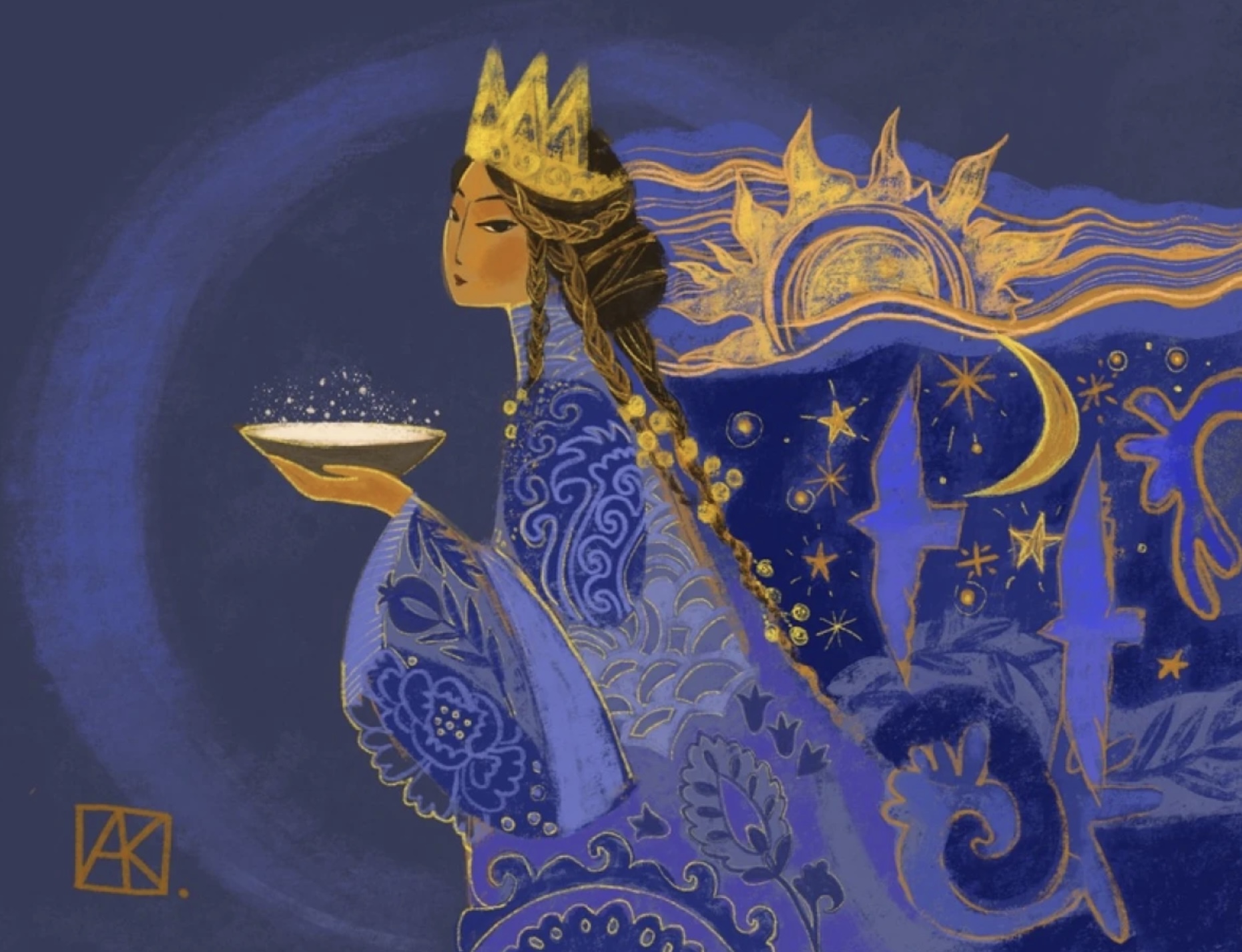ASTANA – International Women’s Day, celebrated on March 8, is a significant time in Kazakhstan’s calendar to honor female deities, reflecting the deep respect for women’s roles in society. This is exemplified by Umai, an iconic figure in Kazakh mythology known as the protector of children.

“Umai” painting by artist Aigerim Karibayeva. Photo credit: art-aika.com
The stories of supernatural women have not only supported but also inspired women globally. In Kazakhstan, Umai, with her iconic status of a deity, could serve as a metaphor for a strong mother figure.
Umai – protector of children
In the traditional worldview of Turkic nations, Umai personifies the feminine. She is one of the primary deities of Kazakh mythology, along with Tengri, the god of heaven.

Kazakh mythology researcher and writer Zira Nauryzbai. Photo courtesy of the author.
Despite rare references in remaining folklore, one can come across varied descriptions of Umai, sometimes revealed either in the divine protective spotlight or in nurturing roles.
“In ethnography, Kazakhs hardly preserved the image of Umai. After all, we have been a Muslim nation for many centuries,” said Zira Nauryzbai, Kazakh mythology researcher and writer, in an interview with The Astana Times.
“The only traces of the cult of goddess Umai are primarily found among ethnographers who recorded midwives referring to’’the hands of mother Mai – Mai-ana’ instead of ‘my hands’ while assisting in childbirth,” said Nauryzbai.
The resemblance between Mai and Umai points to a shared linguistic origin. Additionally, while the Kazakh word ‘mai’ translates as oil, it also connotes prosperity, well-being, and wealth.
Various ceremonies, particularly those associated with weddings and childbirth, invoke the name of Umai.
“In traditional wedding ceremonies, after the kalym [bride price] was paid and before the neke-kyiu [marriage] ritual, where the groom entered the bride’s house, he would pour oil on the fire in his father-in-law and mother-in-law’s yurt. Women would utter the phrase ‘Ot-ana, Mai-ana zharylka,’ which means ‘Mother-fire, mother-Mai, bless us,’” said Nauryzbai.
The main function of the Umai deity was to safeguard women in labor and protect children. It was also believed that Umai understood the language of infants, positioning her as the universal protecting mother figure, highlighting her significant role in nurturing young lives.
Similar to many goddesses across different cultures, Umai is an ambivalent deity of both creation and destruction. In contrast to other cultures where feminine energy is linked to the earth, Umai in Kazakh mythology is depicted as a celestial goddess closely associated with the sun and fire.
“Since we are now predominantly in the Indo-European discourse, the mother goddess is associated with the earth. But we must remember that this perspective primarily resonates with agrarian societies, whereas it holds less significance for pastoralist communities. If we dig deeper, Umai is a heavenly goddess. In fact, reconstructed narratives suggest that she personifies the sun,” said Nauryzbai.
Modern relevance
When asked whether ancient mythological figures of women as goddesses are still relevant today, Nauryzbai suggested that the archetype of the mother goddess could hold significant relevance in modern psychology, particularly in the context of child upbringing.
“According to Erich Neumann, a student of [Carl Gustav] Jung, the archetype of the great mother or mother-goddess carries a potent energetic charge. These archetypes are vast structures through which energy flows dynamically,” Nauryzbai explained.
“He explains that previously this energy was dispersed among multiple women simultaneously: the woman giving birth, her mother, mother-in-law, godmother, and for the religious, the Virgin Mary and other saints. However, with the prevalence of nuclear families and increasing secularism, the support network of extended family and spiritual figures has diminished. As a result, the young mother now often bears the responsibility for her child’s life predominantly on her own,” she added.
“In this respect, revitalizing traditions associated with Umai could undoubtedly provide significant support to young mothers and their families,” said Nauryzbai.


